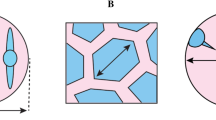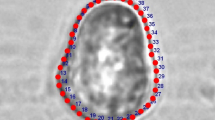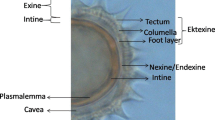Abstract
THE existence of pollen dimorphism in the genus Armeria was discovered by Kulczyński1 during the investigation of Dryas-containing beds near Przemyśl in Poland. Iversen2 showed that in living European material of A. maritima (Mill.) Willd., plants with Type A and Type B pollen are self-incompatible but cross-compatible. However, in the circumpolar variety sibirica Lawr.3, the pollen is monomorphic and the plants are self-compatible. According to Iversen, this may be related to a paucity of pollinating insects.
Similar content being viewed by others
References
KulczyÅski, S., Ada Soc. Bot. Polon., 9, 296 (1932).
Iversen, J., Kgl. Danske Vidensk. Selskab., Biol. Meddel, 15, 1 (1940).
Lawrence, G. H. M., Gentes Herbarum, 4, 391 (1940).
Jessen, K., and Farrington, A., Proc. Roy. Irish Acad., B, 44, 205 (1938).
Szafer, W., Starunia, 20, 1 (1945).
Chandler, M. E. J., Quart., J. Geol. Soc., 77, 4 (1921).
Author information
Authors and Affiliations
Rights and permissions
About this article
Cite this article
BAKER, H. Significance of Pollen Dimorphism in Late-Glacial Armeria. Nature 161, 770–771 (1948). https://doi.org/10.1038/161770b0
Published:
Issue Date:
DOI: https://doi.org/10.1038/161770b0
- Springer Nature Limited
This article is cited by
-
Dimorphic exine sculpturing in two distylous species ofDyerophytum (Plumbaginaceae)
Plant Systematics and Evolution (1986)





